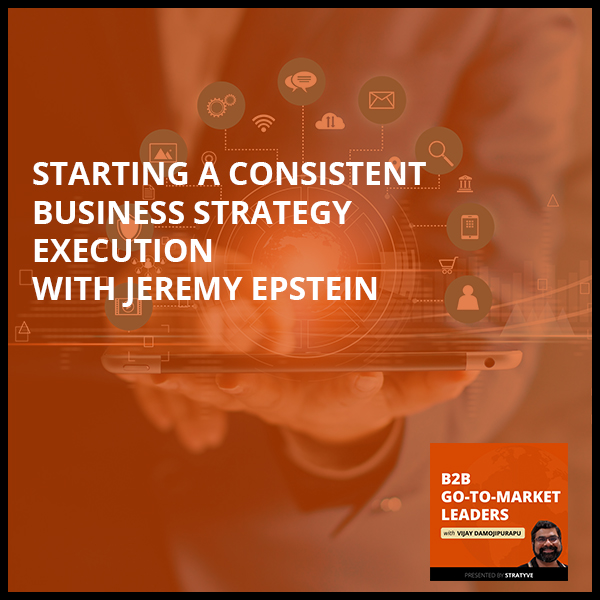
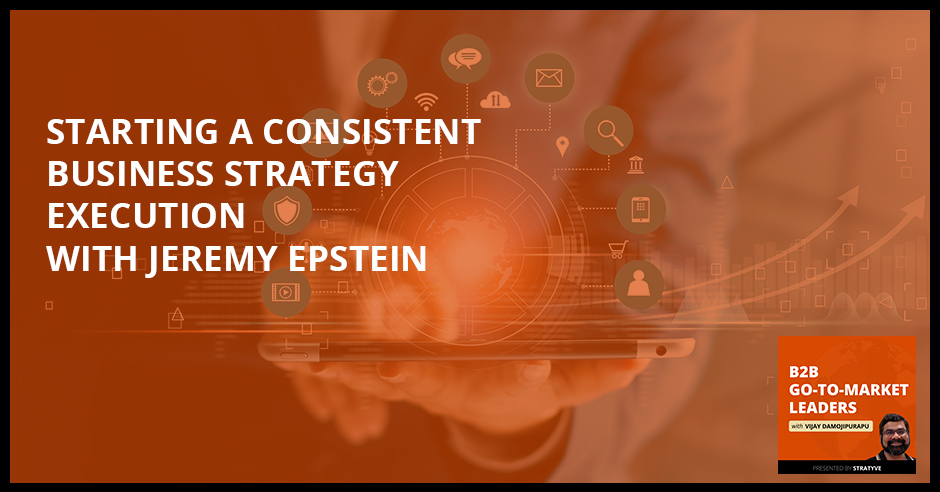
Nothing can come out of an excellent business strategy if the people behind it lack consistency and focus. Therefore, everything on the marketing side boils down to proper strategy execution, which involves communication and collaboration. Vijay Damojipurapu sits down with Jeremy Epstein to talk about how every CEO must learn the ins and outs of marketing or risk becoming ineffective business leaders. They discuss how well-targeted implementation of strategies can successfully transform marketing from a cost center to a revenue driver. Jeremy also dives deep into his work in the world of crypto and OKR as the CMO of Gtmhub, helping business leaders fully embrace the full potential of their plans and work on it before it’s too late.
—
Listen to the podcast here
Starting A Consistent Business Strategy Execution With Jeremy Epstein
I have with me Jeremy Epstein, who is the CMO of Gtmhub. Jeremy, welcome to the show. I’m super excited to have you on the show because of your varied and colorful background. I say that with good intent.
There’s no person involved?
No. You are big on crypto. I’m eager to pick your brains on how you end up there and what you’re doing there. That’s interesting.
We could do that all day also.
Besides that, you’ve grown a marketing career. I’m eager to peek or tap into your head and wisdom and get all those nuggets out for our readers. We can go on and on. We see Neeraj Agrawal who called you as one of the top go-to-market experts and who gets growth marketing. Kudos to that. I want to get the story as well from you.
Thank you. It’s an honor to be here.
There are only two responsibilities that an organization has: innovation and marketing. Everything else is a cost center. Share on XWelcome, Jeremy. I start my show with this question. I pose this to everyone and I’d like to get your take on this. How do you define a good market?
It’s the combination of strategies and a series of activities that you’re going to do in order to help your intended customers and prospects understand your value proposition.
As simple as that.
At the end of the day, if I want to get even simpler, it’s, “How am I going to tell our story?”
There are a lot of pieces below that. Is that a top-level?
You did ask me how I define it so that’s how I define it.

That’s a good start, Jeremy. That is exactly what we want. If you need to unravel it and make it more consumable or actionable for our readers, what is your thought process around that?
Especially when you get to the CMO and VP of marketing level, the fun part is coming up with the strategy. That’s what everyone is paying you, the theoretical big bucks. You get to do all the whiteboarding and come up with the game plan. If you’re a reasonably good marketer and you made it to that level, you probably have a decent strategy. Good for you. Where things start to fall apart, though, is in the execution of the strategy. How effectively are you building a team? Most importantly, how effectively are you communicating what your strategy is? If you talk to people in the marketing function, the number one thing that they’ll tell you that they don’t like about marketing leaders is an inability to effectively communicate. It’s ironic because marketing is all about communication. Here we are, we come up with these grand strategies and then we start to fumble the actual explanation of, “How is this going to work? What are your responsibilities?”
I get super passionate about this sometimes. When I think about the go-to-market, it’s my job as a leader and any marketing leader to say, “Here’s our game plan. Here’s the audience we’re going to go after. Here’s the series of activities I want to do.” More importantly in saying, “Vijay, you’re responsible for this. If you do this, I’m going to carry you off the field and dump Gatorade on you and my hero. If you don’t do this, I’m going to take you out back and shoot you.” That’s how it works. It’s very clear roles and responsibilities. That’s how I think about the go-to-market. It’s the measurement of, “I made some assumptions about what we were going to do. Was I right? What were the experiments that I ran along the way? What was the hypothesis that I have? What do I now know that I didn’t know then?” I’m continually iterating about that, but it’s alignment. Go-to-market is about aligning your team behind the strategy and giving them clarity across teams and the various functions and roles so that everybody can understand, “Here as an organization, this is what we’re going to do to drive our marketing objectives for the quarter of the year, the decade or whatever you’re doing.”
You articulated that very well as always, which is a series of activities. In short, it starts with that. Where a lot of marketing teams fumble is more than the execution pieces and it can be across communication within the marketing team where the leader is not clear or the team members are not clear. Even if that individual, let’s say it’s the growth, demand gen or content person is clear, but there are a lot of gaps and what I call as the multiplier effect, which is, “If we are marching towards a launch, what is growth and demand gen doing? What is content doing? What is field marketing doing? What is the brand marketing doing?” All of those pieces have to line up to that one consequential event.
You’re 100% right and I’ll throw, “What is sales doing? What is the product doing? What is the support team doing?” I like to say we’re all in marketing. It’s just that some of us know it. My all-time favorite marketing teacher is Peter Drucker. He said, “There are only two responsibilities that an organization has, innovation and marketing. Everything else is a cost center.” Our job is to make it clear, especially if you’re working with global teams. I have people in six different countries that are on my team. Communication is even more important because I have to be mindful of not using, say, American football analogies or using a movie analogy because it’s not obvious to a lot of people, especially people for whom English is their second language. I need to be mindful. As leaders in a global world, we all are. That’s where we have to be thoughtful in how we drive the execution. It’s great. Everyone’s strategy is fantastic but at a certain point, it’s like the Mike Tyson thing, “Everyone has a plan until you get punched in the face.” As soon as you launched the campaign, you’ve gotten punched in the face.
You also mentioned something that Peter Drucker called out. You’ve got product or innovation. You’ve got marketing and everything else is a cost center. Peter Drucker mentioned it in the ’60s or ’70s. I don’t recall the exact timeline. It was early. Somehow, somewhere along the line, things got muddled. The reason why I say that is, if you look at marketing at most organizations now, they are seen as a cost center. The number one reason is because marketing is not carrying the revenue burden that the sales team is carrying. I’ve looked at your track record and background. You’ve got a very accomplished track record. Somewhere along those lines, your thinking must have shifted. Can you share your journey when you started your go-to-market journey, but emphasizing how the thought process has evolved from, “Marketing is not just a cost center, but I should be a revenue driver?”
At a certain point, every business has a plan until they get punched in the face. Share on XI’ve been very fortunate along the way to work for forward-thinking leaders. Too many marketers, especially when they’re starting out their career, they’re not reporting to other marketers. They’re reporting to CEOs, founders or COOs who don’t necessarily understand. They think marketing is a trade show booth, T-shirt and bumper sticker. That’s part of it, but that’s not what it’s all about. Marketing comes down to awareness, perception and leads. Everyone thinks about the leads, but they don’t think about awareness and perception.
In my journey, I didn’t study marketing. I studied history in college. I like to say that history and marketing are the same disciplines. It’s just storytelling, combining facts and stories. I started my career during the dot-com era first in Tokyo for a marketing agency there where I read my first marketing book, which was The One to One Future by Don Peppers and Martha Rogers. That set me on the path and formed my thinking. I moved into sales for a couple of years. In New York, I had my own startup company, which was TaskRabbit but a decade too early. We missed that one. I worked at Microsoft in some marketing roles and a lot of channel development roles. Microsoft is where I learned about the operationalization and scale of marketing. That’s where you start to understand, “It’s great that you do all this cool stuff, but if it doesn’t have an impact in some meaningful, measurable way, then you’re wasting everybody’s time and money.”
The big thing for me happened when I started to play around with social media. I’ve been an early adopter going all the way back to my first Mac in 1984. I was blogging since 2000. I was number 186,000 on LinkedIn or some point in that, and Twitter in 2007. I started to understand that the arrival of social media would change the nature of marketing from this broadcast one-to-many mass discipline to everything that became a conversation. It became about relationships and understanding that there’s a person on the other side of the conversation. You want to monetize it, but you have to think about the value. What is the value of this relationship to them? The marketer’s job is to think from the other perspective.
I had the good fortune to be the Head of Marketing at Sprinklr for four years, from our Series A financing round when we had about 30 people at a $20 million valuation until we were hit unicorn with a $1.8 billion valuation and 1,400 people. That was a crazy ride. Again, I was blessed with a phenomenal CEO who said, “Yes, I want you to drive the revenue.” I understand that revenue is going to come when you do things that make other people feel valued in a relationship, conversation and community. That’s what helped me see the whole thing. I started to understand, “You have to think about your activities in terms of outcomes, but the way you achieve those outcomes is by treating people right.” Treating them well, doing the right thing and having confidence that you may not be able to attribute every activity to every single thing. That doesn’t matter. If your strategy says, “I’m going to do the right thing, treat people well and give them reasons to talk about us in this social media empowered world,” the value is going to show up. That’s been my philosophy. It doesn’t work for everybody, but it works for me.
You’ve given a good formula out there. You are the living proof of that mindset. The thinking shift has fairly driven your career growth. Kudos to that. There are quite a few points that caught my mind when you were talking about your journey. One is having the good fortune to work with a CEO who gets marketing. Unfortunately, not many CEOs get marketing. You did call a few points under that, which is, marketing is not just about swag or stickers. It’s a lot more than that. You also emphasized the point of, “The ability to create a community and drive value, you’re doing it one-to-many, but keeping that one person in mind.” That’s when the actual transaction happens. These are great points. Especially for those who are looking to grow in their career, my advice which you validated yet again from another accomplished marketer, is to look for that leader or the CEO who gets marketing.
If you’re in a situation where you’re with a leader who may not get marketing, you have a responsibility to yourself. If you care about marketing, even though it’s scary as all can be, that’s where you go. You have to have that come-to-Jesus moment as it were and say to the CEO, “I can do all these things, but that’s not marketing in its truest sense.” The way that I explain it to non-marketers, I said, “Marketing is like a wedding cake.” They were like, “What do you mean?” I said, “Look at a wedding cake. Everyone pays attention, ‘Look at the decorations and the flowers. It’s beautiful,’ but that’s 6% of the cake and 94% of the cake is a boring batter. If you don’t know how to make the batter, put it in the oven and have a cake that’s not going to collapse when you stack it on one level on top, it doesn’t matter how much icing you put on afterwards. It’s going to look like garbage.” Everyone else is like, “Look at all the icing.” I was like, “Forget the icing. You want people who know how to bake cakes. If you know how to bake cakes, you can learn how to put on the icing. If all you know how to do is the icing and you can’t bake a cake, you’re just going to have a big pile of junk and your marketing is not going to work. Which do you want at your wedding, Mr. or Ms. CEO?”

As you are describing that wedding cake, this visual came to my mind. If you look at the stacked wedding cake and flip it, it’s your funnel. There are a lot of activities in those behind-the-scenes, that ugly batter that you were talking about, but once it’s done well, that’s when you get that sweet-looking funnel.
That’s the best build on the marketing wedding cake analogy I’ve ever had. It’s nicely done. No one’s ever come up with that before.
Continuing our fun-filled but insightful discussion here, how would your parents or kids, depending on who you want to choose, describe what you do on a daily basis?
My kids are baffled. They don’t even know what I do on a daily basis. If I had to be all kidding aside, my wife might say, “My husband tells stories about the near future.” What are the things going to look like? I try to say, “There are all these trends going on now. Remote work.” Now, it’s obvious to everybody. These things were happening before COVID hit us, but now they’ve been accelerated. It’s not so much, “What are we doing now?” It’s, “What are some of the likely outcomes as a result of the arrival of social media, COVID, mobile phone, blockchain technology? Pick your thing and then try to tell people. It’s that overused cliché, but it works well, which is Wayne Gretzky’s, “Skating to where the puck is going.” I try to tell stories like, “Here’s what it might look like in the near future.” All I’m suggesting is, “Here’s what we can do now so that it’s less painful to adjust than it would be otherwise. It’s a lot easier to make the one-degree shift now or two years from now than the 90-degree shift in two years.” I try to tell stories and paint pictures of the near future for people. They might say that or say, “My dad is crazy. I have no idea what he’s doing every day, but he seems to like it.”
How do you do your job? How do you tell stories? What do you do at Gtmhub? Explain that to our audience.
I’d be a pretty bad marketer if I didn’t at least explain what Gtmhub is. We are an enterprise-grade system that’s based on the objectives and key results methodology that helps companies of any size orchestrate consistent strategy execution across their teams, divisions, business units and geographies. We talked about strategy execution before. We have come up with the strategy, but OKR has given you that approach. It’s proven. This is a methodology. We talked about Peter Drucker. It has its origins in Peter Drucker’s work, goes to Andy Grove in Intel in the ’70s and popularized by Google in the early 2000s. With OKRs, I am 100% convinced. Do I have skin in this game? Yes, I do.
If you're in a situation where you're with a leader who may not get marketing, you have a responsibility to yourself. Share on XOnce you read this Seminole book on OKRs, which is Measure What Matters by John Doerr, I tell people, “If by page fifteen you’re not convinced this is the methodology that every company is going to use by the end of this decade, I’ll personally refund the cost of the book.” I’m not willing to do that for every single reader, but I probably am because it’s that convincing. What I try to do are two things. For people who have already decided that OKR is there for them, what I like to call they have OK Religion, I help them understand why we are in fact the most flexible and most enterprise-grade system from among all the competitive sets. There are some very worthy competitors out there. I personally think that they’re overly rigid and designed for a different era. Ours is designed for a much more multilateral, multi-axis world. That’s number one.
The second is for people who are maybe not as familiar with OKRs. We don’t talk about it. What we say is, “You have a challenge around horizontal alignment. Everybody knows that. You have a challenge where you might have a lofty vision or mission statement, but day to day there’s an inconsistency between your execution and what your stated objectives and goals are. We have a way that if you commit to it, you’ll be able to achieve your objectives consistently, which is to be inspired. It’s based on this methodology known as OKRs, which we can teach you. It’s easy to learn. You just have to commit to it.” I’ve put together the strategy. I recruited the team, which I’ve been fortunate. I’ve been able to get some phenomenal world-class players. I try to support them to be the best versions of themselves that they can be and then get out of their way.
What every top CMO does is show the path and let the team do the work.
The hardest part of my job is coming up with my own OKRs. Once I set my OKRs, I can communicate to the team and then we collaborate on everyone else’s. If I do a decent job and set the strategy, objectives and key results well, then the team flows in. It’s a beautiful thing to watch. It was almost like there were days where I thought, “I don’t have enough to do because my team is executing. I’ll go for a walk.” I’m so fortunate to be in this environment. That’s what I try and do. We have a lot of work to do. That’s some called kidding aside.
I did a quick bit of research on Gtmhub. Something that you guys do from a go-to-market for Gtmhub is you have a podcast. That’s one piece. You also have the social media pieces going. Of course, you have the field marketing and enabling the sales because you serve a lot of enterprise-grade companies, which is a complex enterprise buying cycle. Talk to me about the podcast. The reason why I asked this is when I speak with the VPs of Marketing in either my client’s or someone who’s interested in knowing what I do and how I can help them, a constant topic that comes up is content. Content is currency, but a lot of people do not know how to do content well.
Our philosophy when it comes to pretty much everything but certainly content is that no one cares what we say. They only care what other people say about us. What we try to do is create platforms to give other people a voice. Our podcast, which Jenny, our VP of Marketing, hosts, is called Dreams with Deadlines, which I think is one of the greatest names of all times. It’s been growing like gangbusters. It’s the number one podcast in the OKR space. She brings on leading practitioners, leading partners and thought leaders who are pushing the envelope in terms of what OKR is and gives them an opportunity to educate. We just want to educate. That’s all we’re doing.
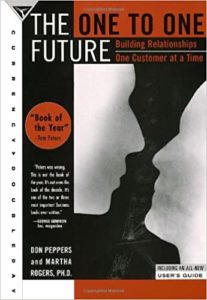
We have a series on our blog called Voices of OKR where we give other people and practitioners, “Here’s how we do it. Here are the mistakes we learned.” We have something we call the OKR Champions Roundtable where we invite our OKR champions. We’re blessed with some of the largest companies in the world like Adobe, CNN and Red Hat. Many phenomenal names like Société Générale and many others. We have over 800 customers and 100,000 users in 75 countries. We bring them together and give them an opportunity to talk with each other about the challenges that they’re facing. For me, content comes down to allowing your customers, prospects and community. I’ve even given a platform to people who use competitive products. I don’t care. I’m here to educate. I’m here to help because that builds trust. If you build trust and you say, “I’m just here to help.” Do you know what my real goal is? It’s to get every one of my clients promoted. That’s what I want. If I get you promoted, we’re going to be in good shape.
How can I help you be smarter, better, more informed, make an easier sale to your boss? That’s what the content is. We put out a buyer’s guide. We call it the 51-step Guide to Avoiding OKR Career Suicide. It’s all the things you should think about. We talked about, “Here’s what you need if you’re buying an enterprise OKR system. Here’s why we think you need it. If you don’t agree with us, throw it out the window.” At the beginning of the introduction, the first page is, “We’re an OKR enterprise software company. Do we want you to buy our software? You bet we do.” We know that. We don’t want to run into that issue so we’re going to tell you, “Here’s how we’re thinking about this. If you don’t like it, burn this thing. We don’t care. We’re just here to help because we’ve been doing this for several years with all these companies.” I guess the caffeine is kicking in. I’m super jazzed up. It’s you. You’re asking me great questions, Vijay.
It’s all about the serving mindset. That’s what it comes down to which is serving mindset and helping. You nailed it, Jeremy. I was going to say that it was you. “The venn is essentially helping you, Mr. Buyer, get that promotion.” That’s it.
It couldn’t be easier than that.
Shifting gears a bit, talk to us about your big goals for 2021.
From an internal perspective, I’m trying to operationalize our marketing. We raised our Series B. We closed it on December 31st. We raised $30 million, which was the largest Series B in the history of the space, which was great.
No one cares what you say as a business. Customers only care what other people say about you. Share on XCongratulations.
I didn’t do much, but we’ll take some of the credit. Now, I’m focused on building out the marketing team and building out our operational capabilities so we can have more process and rhythm. From a marketing overall perspective, I think our awareness in the space is not where I want it to be. We’re perceived as one of the top 3 or 4 players in this space. I’d like us to be across the board and perceived as the number one player. I have a little bit of work to do there. I don’t like to call it a funnel so much. I call it the journey. We get a lot of people who are still very early on in the education process. We do have a probably lower than I personally would like conversion rate from MQL to SQL to opportunity.
It’s respectable. I would like to do a better job of finding more middle and high-intent buyers and then also figuring out for the early or low-intent buyers. What can I do to educate them programmatically at scale without spending the time on the sales? If we can accomplish those things, that will put us in a good position. The product team needs to do what they do because we’re a product company. The sales team needs to do what they do. There’s only so much I can do. From a marketing perspective, I like where our story and messaging are. The visuals are strong. It’s getting better at telling the story and some of the mechanics. It’s to operationalize this and prepare us for that next level of growth as we start looking towards a Series C down the road.
It sounds like you have primarily or heavily a top-down go-to-market, which you tackled the buyers and influencers. What is your thought process around a bottoms-up? It may not be fruitful in this scenario because OKRs itself have to come from top-down and trickle down. Have you seen that maybe it pulls from the bottom-up phase as well?
I wouldn’t call it bottom-up. I call it middle-up. I’m giving away the strategy here, but it doesn’t matter because it all comes down to execution. I can leave my strategy on the front step of my house and someone can come to take it. It won’t matter because they don’t have the Gtmhub OKR platform. Unless they buy it, in which case they would, but they’d still have to do it. The senior executives are horizontally-minded executives, people who are looking across and realize there’s a problem with horizontal alignment. That’s one thing that we look at from an executive perspective. The second thing we do are the OKR champions, the people who are tasked with implementing. It’s helping them go out, be better prepared and more informed. Most importantly, above all, it’s to feel they can trust us. That’s all it comes down to.
You’re going to pick the software company with the people and brand that you trust. That’s what a brand is. A brand is about trust. It’s about establishing trust at those various levels. We need to build relationships with both of those. The economic buyer is going to sign off, but the implementer alone has to deal with the decision. The fact that we are the most flexible platform and we do have the largest number of customers and the most amount of experience, we believe we’ll help them. Fortunately, we have many customers who agree with us. Every now and then, we screw it up. For the most part, we won’t. We’re not perfect. No one would believe me if I said we were. I might as well get that out there. I’m just here for my competition to read this, they go, “This is what this guy is doing.” Bring it. May the best OKR platform win.

Talking about problems and all good market machinery, it doesn’t matter what size or stage of the company you’re in. You’ll always have problems and challenges that you need to deal with. In 2021, you did mention a couple, which is more around from the awareness and even to the MQL down to the conversions. Those are the pieces that you want to tackle. When you encounter such problem areas in your go-to-market execution, do you typically bring in outside experts? When I say experts, I don’t mean agencies. Of course, you have your SEO agencies or demand gen agencies. Besides that, do you typically tap into experts, and for which areas do you do that?
It’s probably too early for me to answer that. Before we got our Series B, I didn’t have a lot of money. We do. We have a relationship with a highly regarded analyst firm to help us with some of our go-to-market thinking, especially positioning around some of the executive C-Suite that we think is relevant or irrelevant. Now that we’re maturing as an organization, we are doing that both in terms of consultants as well as getting the right tools. We’re not afraid to spend on those types of things because there are plenty of things we don’t do well. You might as well find someone who’s good at it and let them do it so you can focus. That’s what OKRs are about. It’s focusing on the thing that you do well and letting everything else go to someone else who does that better. That’s certainly part of our game plan going forward.
Do you mind sharing a bit about your MarTech stack and how it looks like? That’s a mess. I’ve spoken to CMOs and VPs of marketing. People talk a lot and praise the MarTech stack, but they also have the burden of, “That’s way too many tools. I’ve been burdened with the predecessor who built this, but we don’t have any need for it right now.” What does your MarTech stack look like?
I fit into that category. I love it and hate it at the same time because there are a lot of tools out there. My predecessor did a great job, so I’m not in that particular boat. We’re based on HubSpot and then everything flows. From there, our sales team uses Salesforce. We have a nice integration there. It’s a bunch of tools that go on and connect around there. If I said everything moved perfectly, I would also be lying. There are definitely some hiccups, but there are always things that you could be doing better. There are a lot of tools, keeping track of the data and keeping the data clean. These are not new problems. It’s the same problem, but with more tools, APIs and bills coming in.
How do you track or measure signal or intent? That’s a big challenge across the board.
I don’t think we’re particularly good at it. I should have added that in. That goes to our MQL, SQL and the conversation before. It’s doing a better job in terms of differentiating buyers or visitors in terms of intent and based on activity either on-site or off-site. It’s very immature. That’s one of our focus areas. One of my team member’s OKR for Q2 in fact is around that. We’ve already written that down. She’s already off and running. She’s a little bit ahead of the game. We need to do a much better job. What we’ve done a good job on is, I wouldn’t say we solved the problem, but we have a good top-of-funnel in terms of getting those MQLs. It’s that middle of the funnel, middle of the journey that we need to improve on. How we instrument that is, like I said, a big part of our focus. That’s why writing OKR is so important. I say, “Here’s the OKR. We come up with it,” and then people are clear on what they need to do. It comes back to our clarity conversation from before.
If you deliver outcomes, no one cares how much time you spend. It's about the outcome. Share on XThat’s a problem that I see when I speak with my clients or even others in the space. There’s a lot of noise out there. Buyers are inundated because of the slew of virtual events and phone calls. Phone calls have reduced a bit because a lot of people are working at home now so you don’t do the switchboard problem. At the same time, the emails, SMS marketing, all of these are inundating the buyers. One of the CMOs I was speaking with, he was saying, “One of the challenges is how to measure signal and intent correctly and help distill the signal from the noise. Not for my team, but for the buyer.”
I’m very sympathetic. I do struggle sometimes because when I don’t have my CMO hat on, I’m like everybody else, like unsubscribe, take me off the list, blocking and what have you. I’m thinking, “Why is it that when I put on my CMO hat, I think it’s okay?” I’ve been working hard with the team to say, “If you’re not going to read this, if you’re not proud of this and don’t think this adds value, don’t you dare send it. I would rather you miss a deadline than send something that’s crap because it’s going to hurt the brand.” Nobody thinks about, “What about all the people who unsubscribed as a result of this bad mailing or the people who now think one notch lower of you in terms of perception?” Ideally, you hit the deadline and you have quality. If it comes down to it, I’d rather you go another day. I can’t sacrifice the brand just because I said, “We’re launching on March 18.”
We can go on and on. We talked about OKR, marketing conversion problem and signal and intent. Before I ask the questions, there is also another unique aspect to your colorful background, which is crypto. Tell us about what triggered you or what got you into crypto? What are you doing now about that?
I’ve been deep in the world of crypto for the last five years. I joined Gtmhub back in June. For the 4.5 years before that, I was working in the space as an advisor to some of the leading startups. I was the Co-Chief Investment Officer of a crypto hedge fund. I’ve written three books on it. I’ve had the opportunity to brief three-star generals at the Pentagon about crypto, given keynotes and what have you. I fundamentally believe that it’s a foundational transformative technology. It’s a key passion. I think cryptoeconomics is one of the most incredible things that’s ever been invented. I am fortunate that Gtmhub and my team are extremely supportive. It’s my 20% time.
I spend 20% of my week on my crypto-related activities, including managing the fund for my investors. We returned 92% in 2020 so that was good. Advising some of the startups in that space and continuing the blog. I probably had 657 blog posts and another 100 articles on it and evangelizing, studying and understanding it. To me, this feels like the arrival of the internet, but for value. It’s significantly bigger. The part I’m excited about is when I get the opportunity to merge these two worlds. When I can start bringing in cryptoeconomics, cryptocurrencies, non-fungible tokens, decentralized autonomous organizations and all of these concepts that I’ve been playing around with, bring them into Gtmhub to further differentiate our marketing and add value for our customers, that’s going to be epic.
The good news is I have a CEO who is fully supportive and a team that’s excited about it. Until they take me out back and shoot me, I’m going to continue to pursue these two paths. It seems weird like, “How do you have a CMO who does both of these?” Our belief is that, especially when you’re in marketing, you have to get out of the business. You have to be able to look at it from a different perspective. By forcing myself to go to a totally orthogonal industry, I’m able to let my brain rest in a working capacity and then look at the market for OKRs. In fact, I’ve sold Gtmhub to 6 or 7 different crypto projects because they need OKR. Everybody is going to use them so I was like, “You might as well use the one that I work for. Here you go.” It’s a nice opportunity to work on the cutting-edge of two big transformations. Blockchain and crypto are a huge transformation and OKRs, which are going to be the foundational methodology for business and digital transformation this decade. To work in both of these, it’s like nirvana.

You hit on a very important point. Especially for marketers and even marketing leaders, it’s important to detach yourself from the day-to-day. It goes back to what Google has been doing from day one, which is 20% of the time just dedicated to non-work stuff. It keeps you fresh and creative. It keeps your energy going and you bring them back into work.
In fact, we talked about Drucker right over there. I have his book, The Effective Executive. He talks about being aware of where your time is spent, the danger that executives have from being too caught up in their own business and the need to take that step back and look at the market from the perspective of the market. That’s your job as a marketer. I wouldn’t have taken the role if I couldn’t do it, but I’m very blessed to have that kind of support. As an organization, what we represent is the kind of organization that everybody is going to work in, which is if you deliver outcomes, no one cares how much time you spend. It’s about the outcome. It’s not about five days a week. You don’t work on an assembly line in the knowledge economy. Your job is to deliver an outcome. Not output but outcome. If you deliver the outcome, we’re happy. If you don’t deliver the outcome, we’re not happy. It’s very simple.
Especially in this remote and hybrid work environment that the industry is shifting into, it’s very critical. It’s not like the managers and leaders have complete insight into our visibility to what people are doing. Again, it goes back to marketing 101 which is stressed. If you were to give a shout-out to 2 or 3 folks out there in the industry who are executing well on the GTM front, someone who’s inspiring you, giving you new ideas and you look up to, who would they be?
I think the team at Drift does a nice job. They’re sharp. There’s a crypto project called the Helium Network. They do a nice job also with their marketing and storytelling. As far as the third one who does a great job with marketing, I don’t know. I’d have to think about that. Can I get 2 out of 3? It will come to me and I’ll be like, “Why didn’t I say something?” I don’t want to say clichés like Apple or Netflix. That’s lame and capped out. I’ve got to come up with something stronger. It will come to me.
A couple of others, Gong does a good job, Gong.io. Even Clari, they are into revenue intelligence and also doing their own marketing. There are a few others. Drift, I completely agree.
Drift is tight. I’m envious of Drift.
That is the beauty. If your marketing is right, you add so much of the premium halo effect around your product. If you take that out, the product is nothing wow.
It’s Intercom. With all due respect to Intercom, I love Intercom. We use Intercom. I’m just saying, it’s Intercom. I’m going to get in trouble for this one. I hope no one reads this episode. It’s going to kill my career, but I wanted to read for you. For me, I want no one to read because my career is over now. It was nice knowing you, Vijay.
One final question for you, Jeremy. If you were to go back to day one of your GTM career, what advice would you give to your younger self?
That’s an easy one. It’s a marathon, not a sprint. I ran so hard when I was young. I realized, especially with great marketing, it’s like coming back to our cake analogy. You can’t rush the cake.
It goes back to our Buddhist monk mindset.
I’m a wannabe Buddhist monk. That’s my problem is I want. I’m already failing at my Buddhism there. I’ve got a long way to go on the path of enlightenment, it sounds like.
Jeremy, it’s been a pleasure having you on the show. Good luck to you and the team at Gtmhub and of course, your crypto initiatives as well. We’ll cheer you from the sidelines.
Thank you for the opportunity to join your excellent show. Much success to you this year.
Important Links
- Gtmhub
- The One to One Future
- Measure What Matters
- Dreams with Deadlines
- Voices of OKR
- 51-step Guide to Avoiding OKR Career Suicide
- The Effective Executive
- Drift
- Helium Network
- Gong.io
- Clari
About Jeremy Epstein

Chief Marketing Officer, Gtmhub
Epstein spent 6 years at Microsoft and brings a global perspective with stints in Frankfurt and Tokyo. Jeremy served as the first marketing leader at Sprinklr, navigating efforts from Series A through $1.8 billion “Unicorn” status, as the company grew from 30 people to nearly 1400 over the course of 4 years.
Known for his orthogonal approach to marketing, Epstein has written 5 books on marketing, over 200 articles, more than 1000 blog posts and is a sought-after keynote speaker, with presentations in more than 20 countries.
In addition to his significant marketing experience in both enterprises and start-ups, Epstein is a well-regarded and passionate technologist who is a leading authority on blockchain and cryptoeconomics, having briefed 3-star generals at the Pentagon and worked with some of the most cutting-edge teams in the world such as Dapper Labs and Zcash.
Love the show? Subscribe, rate, review, and share! http://stratyve.com/

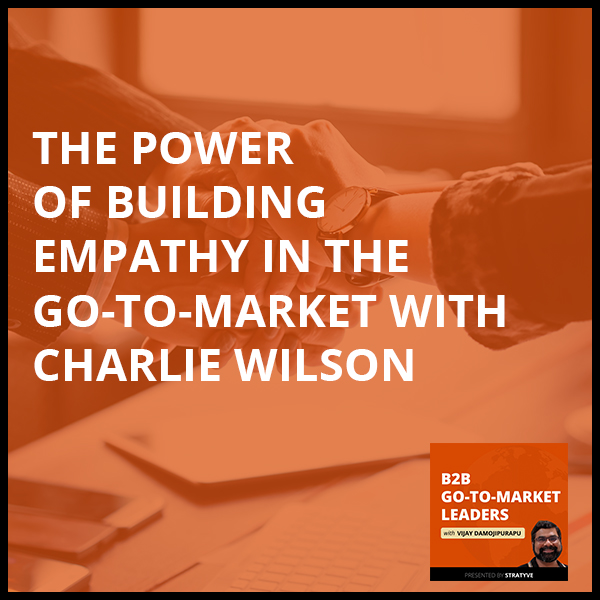
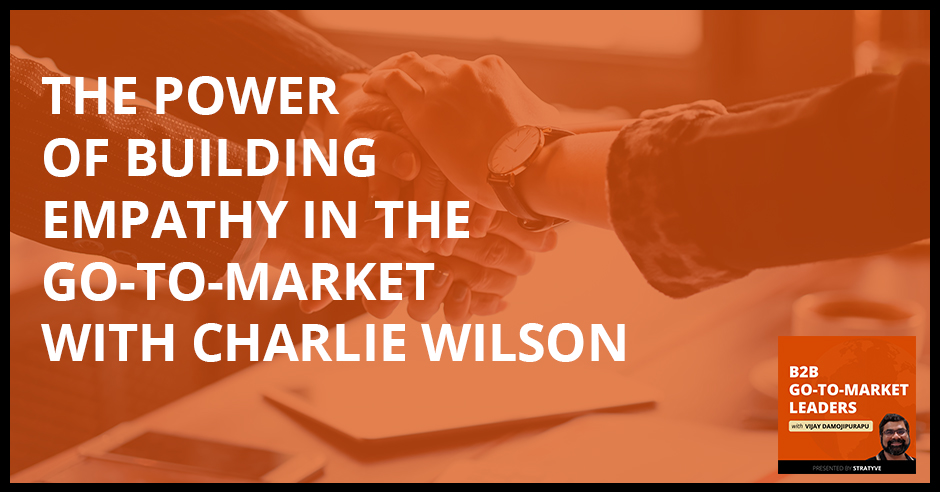



 Proven leader with a mind for the big picture and an eye for the details. Twenty years of executive experience with pioneering technology, payments, and commerce companies. A natural networker, a quick study, and strong advocate of payment solutions for cannabis retail. Earned two engineering degrees: B.S., Arizona State University; M.s., Stanford University.
Proven leader with a mind for the big picture and an eye for the details. Twenty years of executive experience with pioneering technology, payments, and commerce companies. A natural networker, a quick study, and strong advocate of payment solutions for cannabis retail. Earned two engineering degrees: B.S., Arizona State University; M.s., Stanford University.